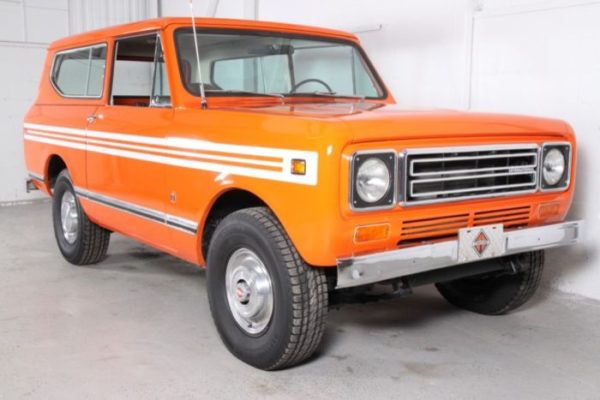
Back when I was in college, a good friend of mine owned a large Michigan sod farm with his father – acres and acres of putting green quality sod. They wanted to upgrade their big tractor so I joined him on his visit to the local tractor dealership – International Harvester (my parents tell me I am a distant – really distant – relative of John Deere).

The tractor they were looking at included air conditioning and a surround sound stereo system. It was impressive. The salesman said that if they bought the tractor that month the dealership would throw in an International Harvester truck.
My friend’s comment to me under his breath was something along the lines of “looks like we are actually buying the truck too.”
Jhoanna Robeledo’s New York Magazine piece on the guy who throws in a Tesla if you buy his condo talks about this marketing technique. Using a Tesla is buzz worthy as a well thought of brand – after all marketing is about getting eyeballs on the listing – but is it effective? Does this technique actual sell properties?
In my view throwing in such a large concession is a red flag signifying the property is over priced enough to cover the seller’s cost of the “gift.”
Econ 101: There is no such thing as a free lunch.
We’ve seen this marketing gimmick attempted with other cars such as a Prius, a Porsche, a Cadillac and Ferrari.
The funny thing is, you never read a follow-up article that shows how this marketing technique/gimmick was successful.

A buyer for the condo in Jhoanna’s article would have the financial wherewithal to buy their own Tesla and likely isn’t thinking about buying a car during their visit to the property.
We don’t see these extreme marketing gimmicks tried with low margin properties. “If I buy this $75,000 condo I get a free Tesla!” Of course not – the condo seller in this “Tesla” story is telegraphing to a potential buyer the listing is over priced.
Yes, in a typical suburban transaction, a seller may throw in a used lawnmower to close the sale, but this is not something that is usually promoted during the actual marketing of the property.
NEWSFLASH Buyers are a lot smarter than this Tesla-giving away seller is giving them given credit for.
2 Comments
Comments are closed.


Dear Mr. Miller,
Thank you for writing about my project. I was hoping you’d give me the opportunity to clear up a misconception in recent reporting about the Tesla.
As an environmentally-friendly developer, I try to build “green” as much as possible. I reuse salvageable wood and brick from the original structures I renovate; I source environmentally friendly materials; I install high-efficiency amenities including a multi zone AC, radiant heat, energy star appliances and windows. I consider small details like building a dual garbage can for recycling.
It is incorrect to report that if you buy the unit I am building, you get a free Tesla. The Tesla is actually a part of the unit, an environmentally-friendly amenity in the same way that the energy-star dishwasher is.
I decided on the Telsa because the unit has a parking space, a unique amenity in Brooklyn. I had planned to install an electric car charger to encourage the buyer to purchase an electric car. I realized I could take this one step further and promote the use of an electric car by making it part of the unit. The buyers may have no interest in the car, and that is fine. They are also welcome to switch out any of the other appliances I’ve built into the unit.
Sincerely,
Eitan Baron
Thanks for commenting. It sounds like you’ve done a beautiful job, placing a lot of effort into the project. However a car is considered personal property, not real estate. Just because you say it is “part of the unit” doesn’t mean it is part of the real estate. I think you mean the Tesla is consistent with the theme of the construction. If you happened to provide an extra refrigerator for free, that is called a “seller concession” and would be the same thing as throwing a Tesla into the deal or whatever other car you happened to offer. It is immaterial whether it is optional for the buyer to take it. Your effort was clearly successful – this unique marketing ploy got a write up in New York Magazine and the blogosphere.